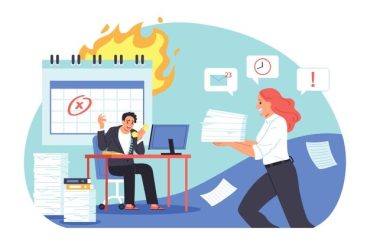There have been five student loan payment pauses during the COVID-19 pandemic, with the most recent extension of this temporary suspension from the U.S. Department of Education lasting through May 1.
The reasoning behind these debt freezes, of course, was to provide a modicum of relief for the nearly 43 million Americans who own a combined $1.57 trillion in federal student loan funds.
Though the goal may have been to alleviate stress during an unbearably nerve-wracking time for so many, it hasn’t necessarily worked out that way.
A Level of Stress That Has Only Increased
Nearly half of all respondents that had more than $5,000 in student loan debt told a national online poll in March 2021 that the pandemic had intensified their levels of stress over the money they owed. And 42% said that their debt triggers high levels of both mental and emotional stress — more than other types of debt.
Sixty percent of respondents said that they didn’t consider their financial goals and priorities before accumulating the debt, but often even those who may be thinking down the road don’t have any other options in the moment. It’s a choice of taking on debt or forgoing the level of education they’re trying to attain.
Women and younger adults are more likely to report negative mental health effects from student loan debt, but this is a broad problem no matter how you look at it. Millions of older borrowers and men are also struggling to pay down debt, save for retirement, or invest in their children’s future education.
Those are just a few of the milestones some borrowers are missing out on. For some, it’s affecting or altering their ability to get married, purchase a home, or start a family.
The Specific Mental Health Threats Borrowers Face
Prolonged stress, anxiety, and shame are some common feelings listed by those who are struggling with student loan debt. But a 2021 mental health survey found that 1 in 14 borrowers experienced suicidal ideation in response to the financial burden of these loans.
It’s even worse for those who have a lower income. That rate was 1 in 8 for borrowers who were unemployed or making less than $50,000 a year.
“A lot of people are on income-driven repayment plans that lower what they’re required to pay every month,” Bridget Haile, head of operations at Summer, which helps borrowers navigate repayment, told CNBC. “The issue is that for a lot of people, even if you make full on-time payments every month for years, you will often see your loan balance go up rather than down.”
It is likelier to be worse for racial minorities. One study found that while the majority of white students owe less than the original amount borrowed four years after graduation, 48% of Black students owe 12.5% more than the original loan amount in that same span. They even hold 186% more debt than their white counterparts 15 years after graduation.
How to Cope with Stress About Student Loan Debt
The Biden administration has canceled roughly $13 billion in student loan debts for more than 600,000 borrowers.
Some of this came through improvements to the Public Service Loan Forgiveness (PSLF) program. Others have helped cancel debt for permanently disabled borrowers or those who were defrauded by for-profit institutions.
But the likelihood of this or any administration wiping out federal student loan debt across the board remains fraught with barriers. Some leaders in Congress have pushed for the forgiveness of up to $50,000 of federally backed student loan debt, but that and other initiatives also have their opponents.
For now, it’s important for employers to step up their efforts to ensure that mental health services are easily accessible within their benefits programs. It’s also vital that we continue to fight stigma.
Debt is a huge driver of stress and anxiety — particularly debt that is tied to student loans — and we must band together to offer support for those in need.
About Wilmington Treatment Center
Wilmington Treatment Center, located in Wilmington, North Carolina, offers residential and outpatient treatment for adults age 18 and older. Our goal is to provide a superior treatment experience for people who are struggling with addictions and certain co-occurring disorders. Our approach to treatment is based on an understanding that addiction is a chronic disease that is best treated through a full continuum of comprehensive services. Throughout their time in our care, patients may receive individual, group, and family therapies, and they have the option to participate in our recreational therapy program and enjoy daily leisure activities. Our treatment center is the perfect place for adults to take the first step on their recovery journey. For more information, please visit www.wilmingtontreatment.com.






